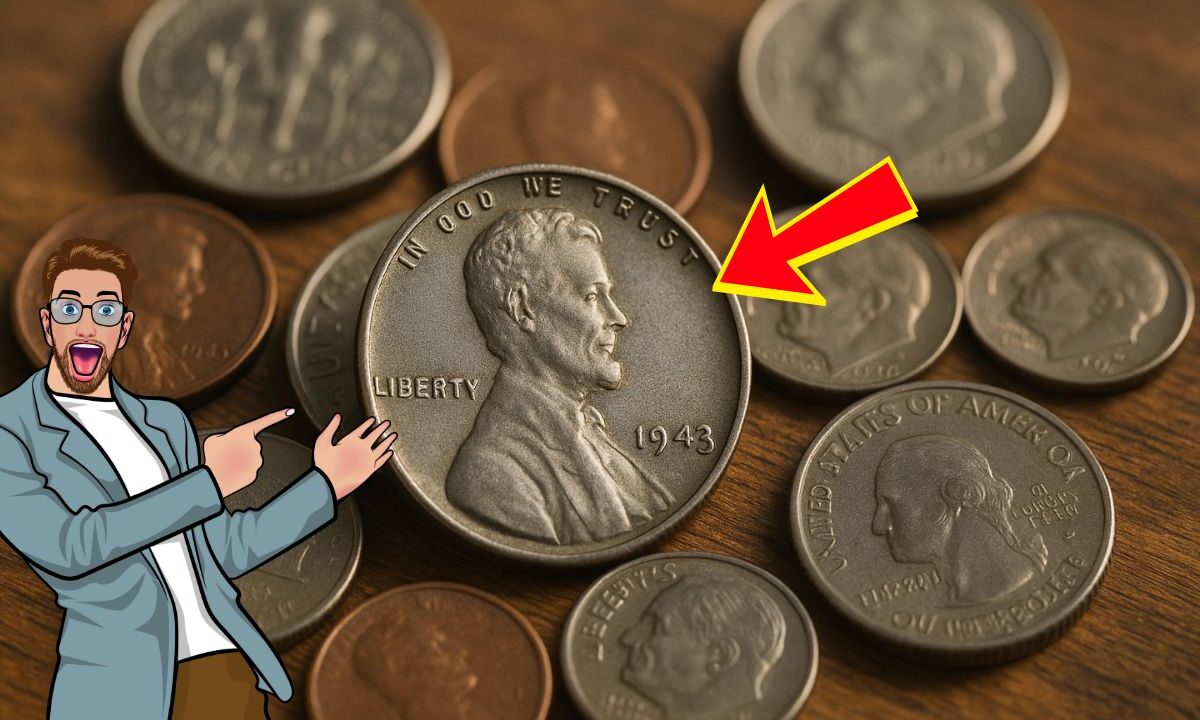The 1943 Lincoln Wheat Penny is one of the most fascinating stories in American coin collecting. Minted during World War II, this penny is made of zinc-coated steel instead of the usual copper, a change necessitated by the war effort.
Among the coins produced that year, a few rare copper pennies slipped through the minting process. These anomalies are now worth astronomical amounts, with some examples fetching over $282,000 at auctions.
Despite their value, the odd 1943 penny occasionally appears in everyday pocket change, surprising collectors and everyday people alike.
In this article, we will explore the history, rarity, value, and tips to identify the elusive 1943 Lincoln Wheat Penny, including details on its copper error version, grading system, and recent auction sales.
History of the 1943 Lincoln Wheat Penny
During World War II, the U.S. government faced a shortage of copper, a critical material for war supplies such as ammunition and military equipment. To address this, the U.S. Mint produced pennies using zinc-coated steel in 1943.
- Regular Production: 1,500,000,000 steel pennies were minted.
- Rare Error: Only a few copper pennies were accidentally struck, making them extremely rare today.
These rare pennies are now referred to as 1943 copper Lincoln pennies and are some of the most sought-after coins in American numismatics.
Characteristics of the 1943 Lincoln Wheat Penny
To identify a true 1943 Lincoln Wheat Penny, collectors look for the following features:
- Material: Steel with zinc coating (standard) or copper (rare error).
- Obverse: Abraham Lincoln profile facing right.
- Reverse: Wheat ears on both sides of the denomination “ONE CENT.”
- Weight: Steel pennies weigh approximately 2.7 grams, while copper error pennies weigh 3.11 grams.
- Color: Steel pennies appear silver-gray; copper errors have the familiar reddish-brown tone.
Why the 1943 Copper Penny Is Valuable
The 1943 copper Lincoln Wheat Penny is extremely valuable for several reasons:
- Rarity: Only a handful exist today.
- Historical Significance: Represents a pivotal era during World War II.
- Collector Demand: Coin collectors, investors, and numismatic enthusiasts highly covet this coin.
- Auction Prices: Some examples have sold for as high as $282,000 in recent auctions.
Recent Auction Sales
| Coin Type | Material | Auction Year | Sale Price |
|---|---|---|---|
| 1943 Copper Lincoln Penny | Copper | 2019 | $282,000 |
| 1943 Copper Lincoln Penny | Copper | 2012 | $150,000 |
| 1943 Steel Lincoln Penny | Steel | 2021 | $50 (everyday circulation) |
Even though most 1943 pennies in circulation are steel, collectors should always check for copper anomalies in loose change.
How to Identify a Rare 1943 Copper Penny
Collectors and casual finders should follow these steps to spot a potential rare penny:
- Check the Weight: Copper error pennies weigh slightly more than steel pennies (3.11g vs. 2.7g).
- Inspect the Color: True copper pennies are reddish-brown, not silver-gray.
- Look for Mint Marks: Rare copper pennies may have mint marks, including “D” for Denver or “S” for San Francisco.
- Avoid Damage: Ensure the coin is not heavily corroded, as this reduces its value significantly.
Grading System
The numismatic grading system determines a coin’s condition and value. For 1943 Lincoln pennies:
- MS-65 (Mint State): Perfect condition; highly sought after; highest auction prices.
- MS-60 to MS-64: Slightly worn; still valuable.
- AG (About Good): Poor condition; collectors pay less but still interested.
The grading system directly impacts market value and should always be considered when selling or buying rare pennies.
Tips for Everyday People
Even casual coin holders can benefit from understanding these tips:
- Check Pocket Change: Always inspect pennies from 1943.
- Use a Scale: A precision scale can help determine metal composition.
- Consult Experts: For potential copper errors, professional grading ensures accurate valuation.
- Avoid Cleaning: Cleaning can destroy the coin’s natural patina and drastically lower its value.
The 1943 Lincoln Wheat Penny is a remarkable piece of American history and numismatics. While most pennies from this year are zinc-coated steel, the rare copper error pennies continue to intrigue collectors and occasionally surface in everyday pocket change.
With values reaching as high as $282,000, finding one is both exciting and potentially life-changing. Whether you’re a casual finder or a seasoned collector, careful examination and professional grading are key to understanding the true value of this extraordinary coin.
FAQs
How rare is the 1943 copper Lincoln Wheat penny?
Extremely rare. Only a handful exist, with most pennies from 1943 being steel. Copper errors can sell for over $282,000.
Can a 1943 Lincoln penny be found in my pocket change?
While most are steel and common, a rare copper penny could theoretically appear in everyday circulation, though it’s extremely unlikely.
How can I verify if my 1943 penny is genuine?
Check the weight, color, and mint mark. Consulting a professional coin grading service is recommended for accurate verification.

